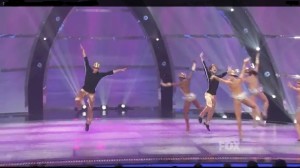Autism Movement Therapy and Why It Works
Autism movement therapy is one way to support your autistic child. It helps to decrease the symptoms of autism and can aid in behavior issues that are associated with autism. There are many reasons why dance and movement therapy is so successful in helping autistic patients.
To first understand the reasons why dance and movement therapy are so beneficial to autistic patients, you have to understand what is going on in the brain of an autistic child. Learning is made difficult for someone with autism, simply because they have a hard time accessing and retrieving information in their long and/or short term memory banks. This is because the transmitters are damaged in some way or the pathway does not exist at all. Experts liken it to a library in which none of the information is stored in an organized, easy to access way.
One reason why dance and movement therapy is so successful is that it helps to overcome and reduce the problem of retrieving or accessing information. Autism movement therapy is a method of cognitive redirectional therapy that helps to rebuild those pathways or make new ones. This means fewer or reduced symptoms and a greater ability to learn.
Music, rhythm, and sequential movements all work together to activate both the left and right sides of the brain. This is important for autistic children, because often the two sides do not communicate with each other, which is the cause of many of the symptoms of autism. This therapy causes them to find new pathways or reinforce the pathways that are there to increase the communication between the two hemispheres of the brain.
Dance movement therapy and autism reduction has been proven by many different studies. While it is an alternative therapy, the results that have been found are very encouraging. Autistic children and adolescents who undergo autism movement therapy are better able to focus, which allows them to learn more efficiently and access information more easily.
How does dance and movement therapy help?
By using music and movements, it creates a trigger for certain behaviors that aid in the brain processing more efficiently because both sides of the brain are working in conjunction with one another. This means that the child is able to retrieve information and retain information. In addition, children who have autism movement therapy also tend to wander less, show less resistive behavior, and have reduced negative response to being touched.
There are three different levels of autism movement therapy and each level builds upon the next. The pacing through the levels is slow and this aids the students to more easily learn the movements. The therapy takes about 15 minutes and includes a warm-up, stationary movement, locomotion movement, improvisation, and relaxation or cool down. Once they have mastered the sequencing and patterns (information), then their body will respond to the information or triggers. This is the goal of dance and movement therapy.
Making any progress for an autistic child is significant. That is why many parents and caregivers choose to use autism movement therapy as an alternative treatment. Normally, it is used in conjunction with other types of therapy, but it is one that has been found to be extremely successful in helping to reduce certain behaviors and learning issues that autistic children are faced with.
Dance movement therapy and autism can go together quite well. The benefits are numerous and they can make a significant difference in the gains that your autistic child will be able to make now and in the future. Consider it as a therapy to support and aid your child.

Some More Therapies
1). Craniosacral Therapy
2). FAQ on Hippotherapy
3). Dolphin Therapy for Individuals with Autism
Don’t forget to check, “How to find fund for autism therapy“